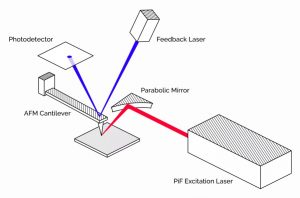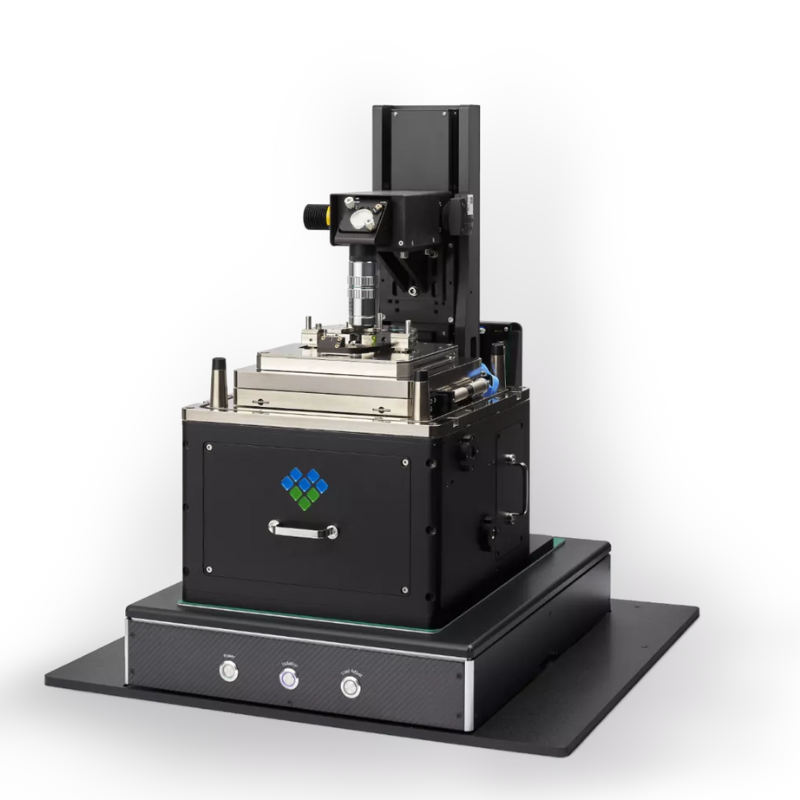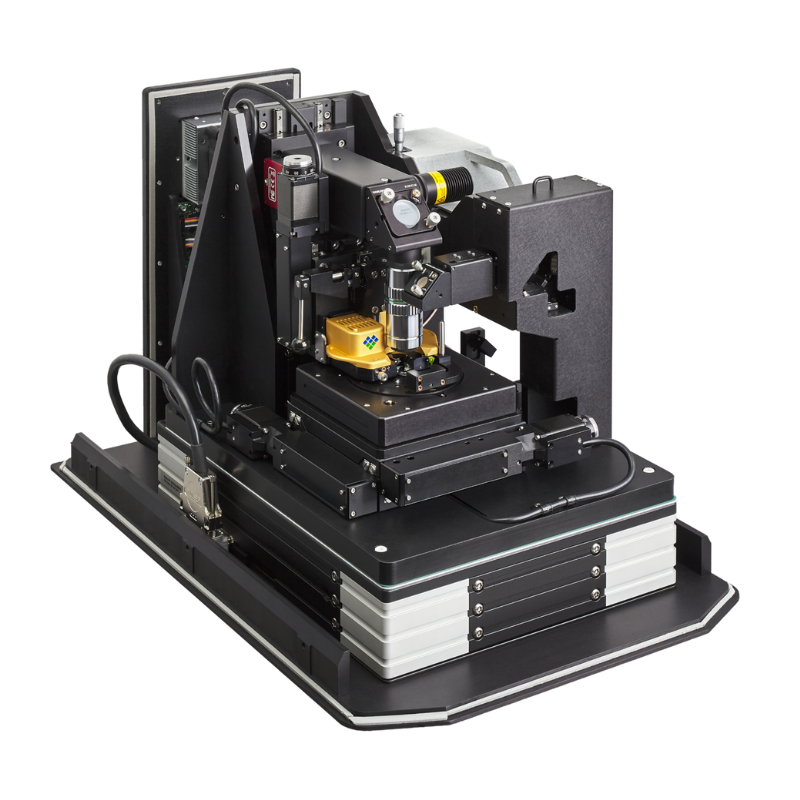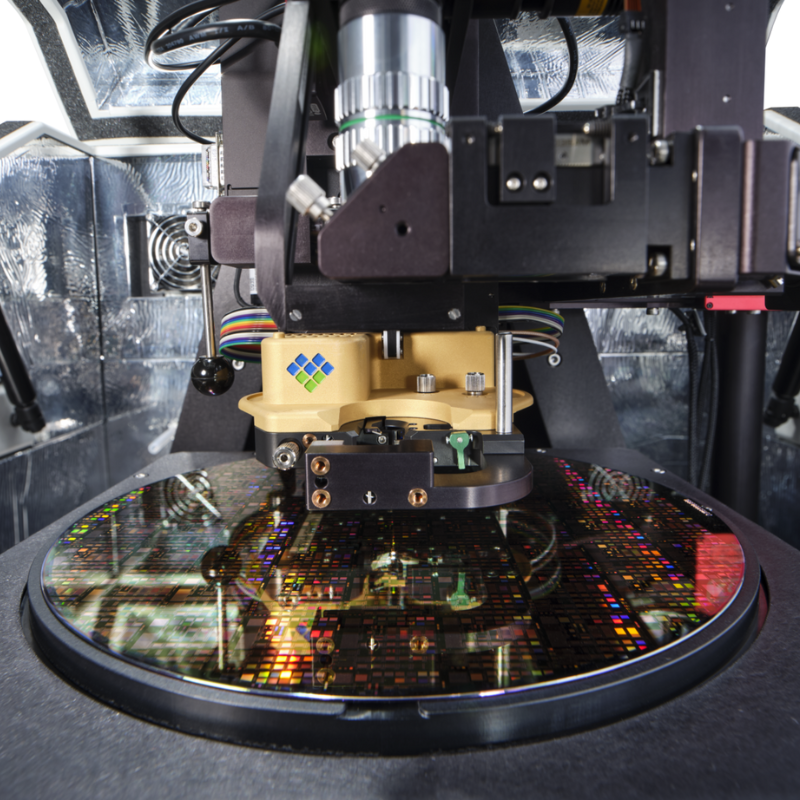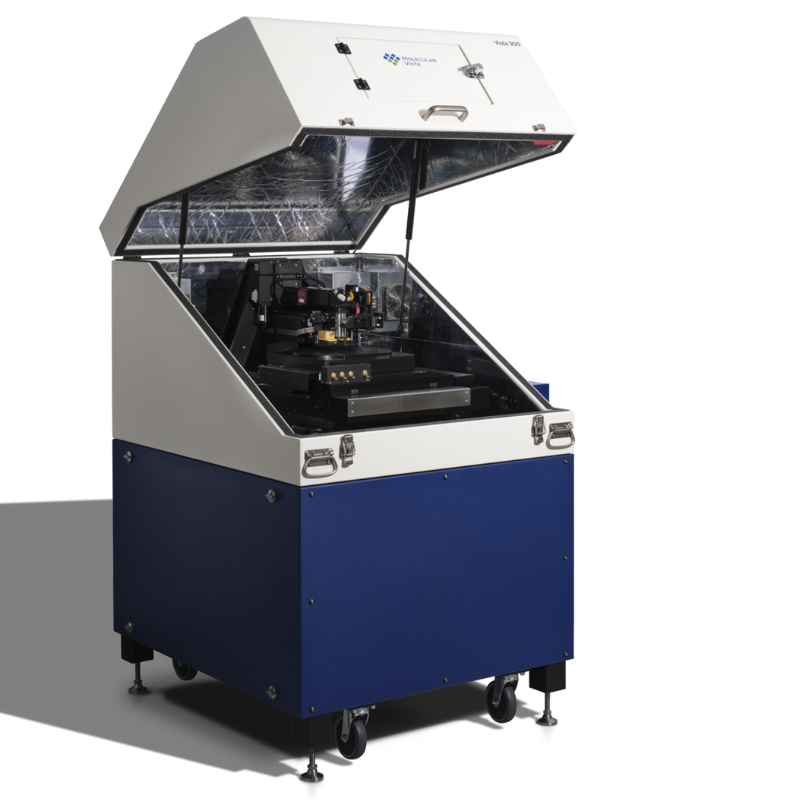Click here to discover more
Optical Microscopy
We are proud to represent Molecular Vista who are experts in nanoscale chemical analysis.
Molecular Vista manufactures nano‑IR microscopes and develops PiFM and PiF-IR microscopy and spectroscopy. One billion times better than FTIR* – Get nano‑IR spectra to understand nanomaterials at a level unattainable with conventional FTIR techniques. More Time For Science – Save your time for important work. PiF‑IR spectra are fast and easy to take with no finicky alignments or calibration standards needed.
*FTIR is diffraction limited to a resolution of about (10,000 nm )3 = 1×1012 nm3 while PiF‑IR has a resolution of less than (10 nm)3 = 1×103 nm3. Therefore, PiF‑IR is at least 1×109 times more precise.
See all the Raptor cameras at a glance and then book a demo!
PRODUCTS:
ADVANTAGES:
- Exceptional Spatial Resolution in Chemical Mapping
- Excellent Sensitivity
- Good Correlation between PiFM and Conventional IR Spectra
- Universal Sample Applicability
- Hyper-spectral Nano-IR Imaging
- Exceptional ease of use
The most advanced mapping technique available
Create chemical absorption maps of nano-scale features in a matter of minutes. Understand material phase distributions or contaminants and defects using high-resolution nano-IR images.
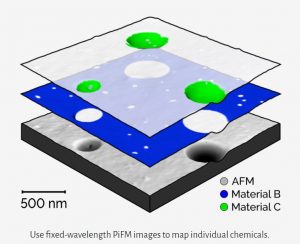
Capture clean spectra in one shot
Avoid sample burning and get cleaner spectra with granular laser power notching for both PiFM and PiF‑IR. Create unlimited notches to maximise SNR without having to wait for averaging to drive down noise.

Leverage the power of FTIR libraries at an unprecedented scale. Existing FTIR spectra can be used to identify molecular fingerprints in PiF‑IR spectra.
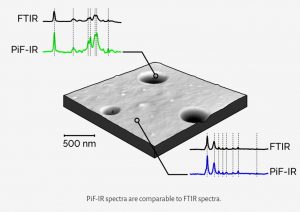
Easily extract all possible information from a sample using our automated hyPIR™ imaging mode. This technology creates hyper-spectral images where every pixel contains a complete IR spectrum.
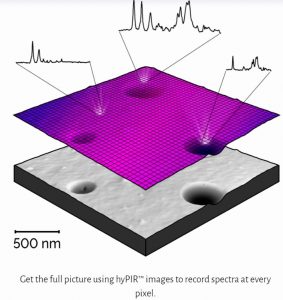
It doesn’t matter if you want to study organics, inorganic, or both simultaneously. Get the most information with the excellent mono-layer molecular sensitivity provided by PiFM and PiF‑IR. Plus, expand the techniques into other wavelength ranges including visible light for even more varied experiments.
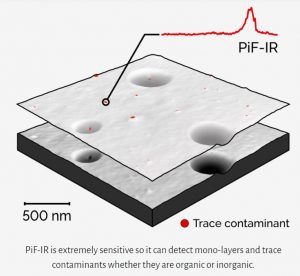
Probe samples at different depths to get a 3D understanding of how materials are spatially related at the nano-scale.
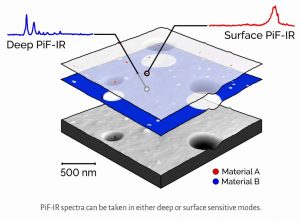
Understand why PiFM and PiF‑IR are the most capable nano-IR techniques by learning the principles behind how they work.
